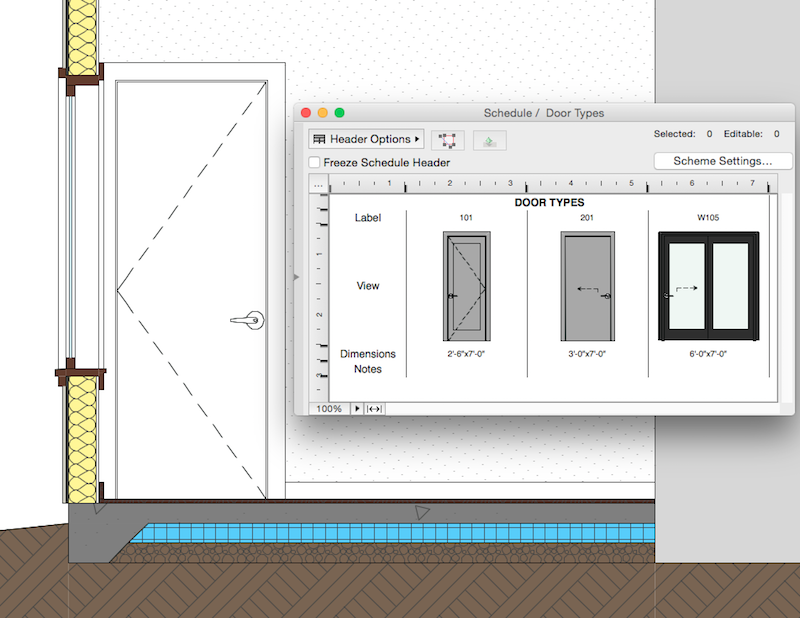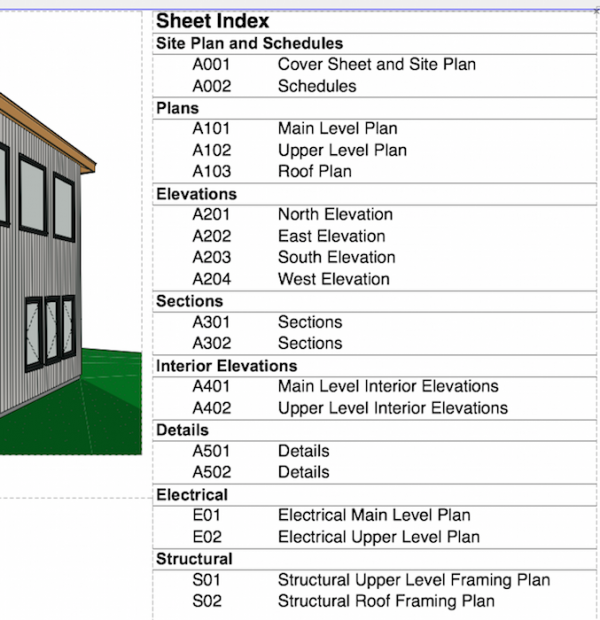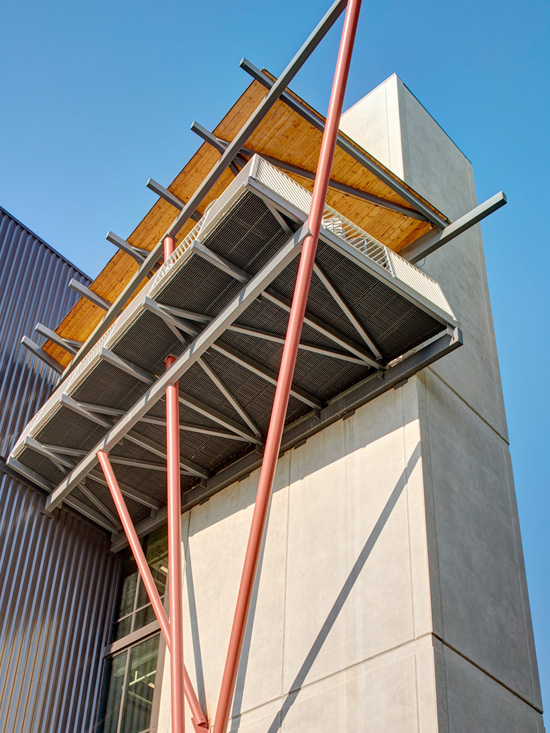This article was created by Jared Banks
“I want to learn Archicad…what should I do?”
I get this question ALL the time. And because I am who I am, I often drop everything I’m doing and respond, whether I’m asked via the Internet, over the phone, or in person. If you’ve read all seven hundred(ish) blog posts and articles that I’ve written since 2010 (this is number one hundred and one on BIM Engine in case you were wondering), you’ve probably come across much of this advice. But I don’t remember everything I’ve written, and I don’t expect you to either. So in an effort to save everyone some time, here’s a list of things you should do if you want to learn Archicad (after of course going to www.myarchicad.com and downloading a trial version for free, if you don’t already own Archicad):
1-Pick a good first project.
This means two things. To learn Archicad, I highly recommend taking an old project and redoing it in Archicad. What’s great about this is that you aren’t thinking about the design or the details. You’ve figured all that out. You therefore get to focus on how to work within Archicad. Equally important, if you are recreating a project that is prototypical for your office, you’ll be learning how to do the things you’ll need to do in the future. Which brings me to the second aspect of this piece of advice: choose your first live project wisely. The project should be a typical project for your firm. If you do houses, it should be a house, not the random dentist’s office someone asked you to design. If you do tenant build-outs, it should be one of those, not the pro-Bono work you agreed to do for a former client. And if the project can be on the less complex end of your standard work, that’s even better. I once had a boss decide that a coworker’s first Archicad project would be one with a super complex roof where all the columns were multi-trunked trees that the timber framer found while walking through the forest. It did not end well. When choosing your first project, go with something comfortable and known. Show it to an Archicad expert and ask if they think it’d be a good one to start with. Remember your first project isn’t going to take advantage of every aspect of Archicad. This is good.
2-Watch Archicad YouTube Videos.
There are a ton. Here’s a few Channels you should check out, but the list is always expanding and changing, so make sure to search around YouTube for more. Videos are great because you get to watch someone work. It’s the next best thing to…
3-Watch over a coworker’s shoulder while he or she works.
I did this when I first started using Archicad. It was the best. I caught so many things that no one would have ever told me about, because the person doing the commands was doing them unconsciously.
4-If you don’t have coworkers who know Archicad, search out other local users.
There are most definitely other local users. Chat with them, see if you can co-locate for awhile. You’re not necessarily looking to have them train you; it’s just nice to be surrounded by other Archicad users while you learn.
5-Find a mentor
This person could be in your firm, in your city, or on the Internet. Having a go-to person to answer your questions will make your life easy. Make sure to thank them (via money, dinner, good vibes, networking, or something).
6-Consider training
Some people can teach themselves Archicad. Many people can’t. Look into training options. Money spent on training is a great investment. Myself and others have successfully trained coworkers, other local users, and even users 100% remotely via all the great free video conferencing software out there. GRAPHISOFT North America has full time staff that will do training as well, and if you ask around the community there are plenty of experienced users who will be happy to assist you.

7-Find a template
If nothing else, download mine. You can have it for free, if you want. A good template will not only make using Archicad easier, it’ll help you understand an expert’s logic. Using Archicad without a good template can be such a mess. Don’t waste your energy working without a template.
8-Understand that there is a ton of Archicad content available on the internet
Look at my Archicad Resources Page. I need to devote an afternoon to updating it, but it has a big list of general resources. Knowing where to look for help, tutorials, add-ons, Objects, etc. is a big part of learning Archicad.
9-Read threads, ask questions, and answer questions on the Archicad-Talk Forum
Perhaps the best thing you can do to learn Archicad is make the Archicad-Talk Forum your most visited website. And don’t just lurk. Ask questions, and then when you can, answer them too. There are a lot of wonderful users on the forum who are happy to help. Here’s some advice for getting the most out of the forum. Join LinkedIn groups as well, but the forum comes first. It’s the place with the most technically oriented discussions. And that’s where you’ll find the best active gurus, too.
10-Find events to attend, whether virtual or local.
If you are in North America, Graphisoft North America (GSNA) has an events page you can check out. If there is a local user group, go to it! If there isn’t one, find some users who will help you start one. A new user in Seattle asked a couple local experts to get beers with him one night. We all had a great time. It looks like now, in addition to our regular official user group, a few of us will get together monthly to talk Archicad. This shouldn’t be surprising. There are a lot of passionate users out there. We all want excuses to get together, socialize, and talk about this aspect of our profession that most people (spouses???) don’t get.
11-Talk to someone at GRAPHISOFT
Seriously. Just give them a call. I have met just about everyone at GSNA and none of them are scary. Not one. There are sales people and technical people to talk to, depending on your questions. If they can’t answer your questions, I’m sure they’ll connect you with someone who can, either within the company or outside of it. They’ll know local users who would be happy to talk to you (remember that there are tons of users who love the software and are always eager to talk about it with other people).
12-Collaborate with existing users
The benefits of BIM grow as one begins to collaborate with others on the design and construction teams. And Archicad is great for collaboration (thanks to the BIMserver and Teamwork 2). So why not turn that into part of your learning strategy? Find an existing user and do a project together. This is great because you not only get to learn, you also get to see the benefits of high-level Archicad usage first hand on one of your projects. This also negates one of the biggest fears of switching to a new program: maintaining the quality and profitability of your first project.
Okay so those points will help you learn Archicad, but I also want to talk about mindset as well. You can surround yourself, and pay for, all the right people and assets, but you also have to get the right mind set. So here’s four bonus points on that less obvious transition:
Read blog posts and articles about theory—both on Archicad and BIM.
You’ll find those all over this site and my own blog. But you’ll also find posts on other Archicad blogs as well. Here’s a list of some other sites, though there are tons more. Reading about theory will give you better context about what you should pay attention to and why. For instance, just knowing WHY you want to use Archicad and/or BIM will help you focus on the aspects of the program that support that need. The order of learning is vastly different if you are primarily interested in beautiful 2D documentation, 3D collaboration with consultants, or energy analysis. You can do all of that and more, but each suggests different priorities.
Remember the switch to Archicad is about something much larger than going from 2D to 3D
BIM is a paradigm shift. Keep that in mind. This post on BIM implementation won’t tell you how to properly model, but it’ll get you into a better mindset for what changes are upon you. Learning about BIM in general is also important because that will help you understand so much more about why Archicad is the way it is, and give you perspective of where you can take your firm in the future.
Stay Inspired. However possible.

Look for advice in your favorite band’s music. If you get down about how much you have to learn, look back over this list and find something to energize you. Maybe it’s as simple as just looking at all the amazing work being done in Archicad. Maybe it’s just not trying to accomplish so much so soon. Maybe you are assuming you’ll do more right away than you really should be doing. Knowing what to model, or not to model, is just as important to a new user as knowing HOW to model something. Use the mantra “baby steps, baby steps, baby steps.”
Be Patient. Look at these graphs and read this post.
Remember, you might be the most creative, intelligent, experienced architect ever. You might be a pure genius wizard at your old tools. And someday soon you’ll be that good in Archicad as well. But when starting off, things will be hard, you’ll suck, and what used to be fun won’t be. That’ll change. And depending on your attitude and diligence, that’ll change quickly. But you’re at the bottom of the knowledge continuum at the moment.
What am I missing? What other advice do you have for someone wanting to learn Archicad? It’s so easy to bombard interested users with hundreds of tips. If you could only say three things, what would they be? I think looking back over my lists I’d say: Forum, Videos, Mentor. But argh, is it hard to pick only three!
Are you following Graphisoft North America on Twitter? Click Here to keep track of all the latest Archicad News in North America (and beyond).
You might also like:

More Articles:
Archicad
Customer Stories
Education
Industry News
Tips, Resources + Downloads
Webinar Recordings